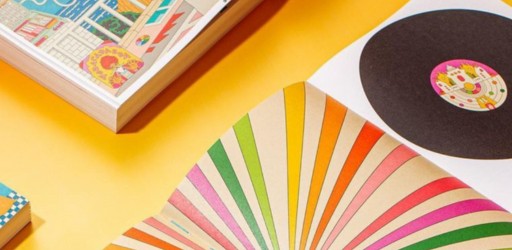Ian García
Lead Animator at Petoons Studio
Master in 2D and 3D Animation – LCI Barcelona

With the onset of the pandemic, video games became a haven for many people, generating record numbers of gamers connected daily to the multiple platforms that exist today. To better understand how this industry works, we interviewed Ian García, LCI Barcelona alumni and lead animator at the transmedia IP incubator Petoons Studio.
- Tell us about your professional career.
I started my career with Dario Durán, who was my professor in the Master in 2D and 3D Animation. The project consisted of a series of 12 chapters of 1 or 2 minutes for the music group Helloween. I have also worked as an animator in the children's series Nina de l'espai and Molang.
- How do you remember your student days? How has everything you learned with us helped you?
I chose this school because it offered me what I was looking for at that time. During that stage I learned the necessary bases to understand how the world of animation works and, after finishing my studies, I was able to start animating professionally.
- Tell us about Petoons Studio. How did you start working there? What are your tasks in the studio?
My partner knew one of the workers. I sent the portfolio and they liked it. My task since then is to keep track of the animations, clean ups and inbetweens done by the animation assistants, apart from taking care of the more complex animations and main characters. I share this latest work with Arnau Martín, who is also an alumni of the school.
- How is the day to day in Petoons?
The atmosphere is great. We are all part of the product we are creating and each one provides details to improve our game. We have moments of jokes and others when we must get more serious. During the break we relax together with video games or board games.
- Did the pandemic change the way you work? How did you adapt to this new situation?
When the confinement began, we started teleworking. The level of production and the mood were affected, but we did our best to keep this afloat and we were looking forward to meeting again in the studio and joking together.
One of the drawbacks of teleworking is that we could not see what another department was doing and, since each of us works with a specific program, it was quite difficult to keep track of areas that are not part of our specialty. In my case, for example, the fact of testing animation within the game.
- You are now developing the video game Curse of the Sea Rats. What can you explain about it?
It is a very ambitious project. We want to merge the best of a Metroidvania style video game with the best of visual art. Months ago we launched a Kickstarter campaign, and we are currently still working on the project. You can follow our progress here.
- Finally, to what extent do you think video games help us to cope with difficult situations like the pandemic?
People have different ways of entertaining themselves. Evasion has become necessary during this last year, but I do not think video games have changed their function. Although the demand has increased, they meet the same goals as always: to entertain and amuse.




